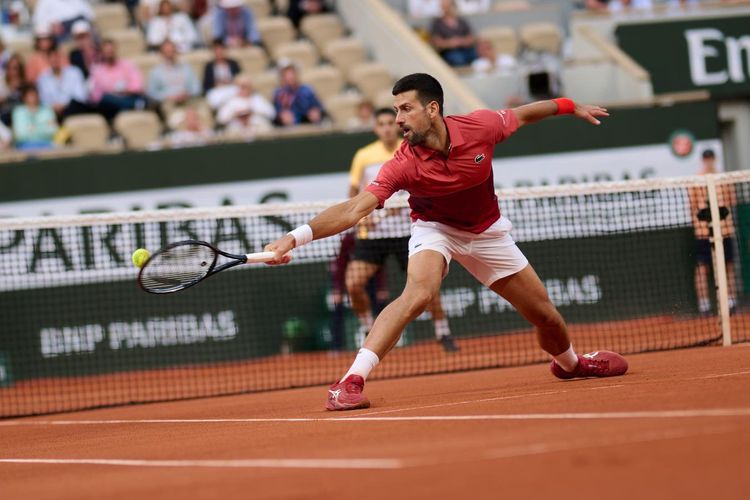Novak Djokovic Tears Right Medial Meniscus, Withdraws From ...

Novak Djokovic suffered a right knee injury during his fourth round match against Francisco ... [+] Cerundolo of Argentina at the French Open tennis tournament at Roland Garros, Paris, France, on June 3, 2024. (Photo by Meng Dingbo/Xinhua via Getty Images)
Xinhua News Agency via Getty ImagesNovak Djokovic won’t be winning his 25th Grand Slam title at this year’s French Open. The top-seeded Djokovic’s run at Roland Garros came to a rather Ruud end when he was forced to withdraw from his quarterfinal match against Casper Ruud. In fact, he didn’t even get to start that match. The reason was a torn medial meniscus in his right knee that the 37-year-old Djokovic had apparently suffered during a gritty five-set victory over Francisco Cerundolo. The tear may have occurred in the third game of the second set of that fourth round match against Cerundolo.
With a record 24 Grand Slam titles in his career, Djokovic is certainly an uncommon tennis player. But a torn meniscus is a very common knee injury, especially in sports that involve a lot of pivoting such as tennis, soccer, football, basketball and that wonderful wizard sport of Quidditch.
If you were to look into your knees, you’d see two rubbery C-shaped pieces of cartilage in each knee. Each of these pieces of cartilage is called a meniscus. In each knee, one of these pieces of cartilage is called the lateral meniscus due to its location in the lateral part of your knee. That’s the right side of your right knee and left side of your left knee. The other piece of cartilage is called the medial meniscus due to its location in guess what the medial part of your knee. That’s the left side of your right knee and the right side of your left knee.
You should have a total of four menisci—which is the plural of meniscus—assuming that you are a human with two knees and not a centipede. These menisci serve as cushions between your femur and your tibia in each of your knees. So you can thank your menisci for preventing your bones from rubbing directly against each other in what would be a very ouchy manner.
(Illustration: Getty)
gettyAs the diagram above shows, you can tear these menisci when your full weight is on them and you twist or rotate your knee quickly. As a result, you may suffer pain and swelling in your knee. You may also feel stiffness and a popping sensation in your knee when you bend and extend it. Depending on the size, shape and location of the tear, the injury could also impede the movement of your knee and keep you from fully extending your knee. Your knee can feel like it is “catching” on something—essentially a piece of cartilage that’s sticking out and getting in the way of your movement. In some cases, your knee may even get locked into a position or feel like it’s giving way due to the tear.
Your symptoms might not emerge as soon as the injury occurs, especially if the tear is small. It could even take 24 hours or more for you to notice anything wrong.
Now, many meniscal injuries can heal with time, rest, ice and anti-inflammatory medications. So don’t just jump right into surgery if you’ve suffered a meniscal tear. However, if the tear is significant, surgery may be needed. This will entail either repairing or shaving down the affected of cartilage.
Over time as you age, your menisci can get progressively worn down. This makes you increasingly susceptible to meniscal tears the older you get. That’s yet another reason why playing tackle football in your 70s may not be the best idea. Carrying more weight in your body can also increase your chances of meniscal tears. Wear and tear to your menisci can decrease their cushioning effect. Without such cushioning, your femur and tibia can rub more directly on each other, making it more likely for your knee to develop osteoarthritis.
Actress Constance Labbe asks Serbia's Novak Djokovic for an autograph during day 9 of the 2024 ... [+] French Open. (Photo by Jean Catuffe/Getty Images)
Getty ImagesDjokovic may have been on the wrong side of a right knee injury in Paris. But he couuld have enough recovery time before the next Grand Slam tournament, Wimbledon, which starts July 1, since a meniscal tear can take four to twelve weeks to heal. It will all depend on the extent and specific location of the tear, which an MRI can help determine.
Follow me on Twitter or LinkedIn. Check out my website.









































